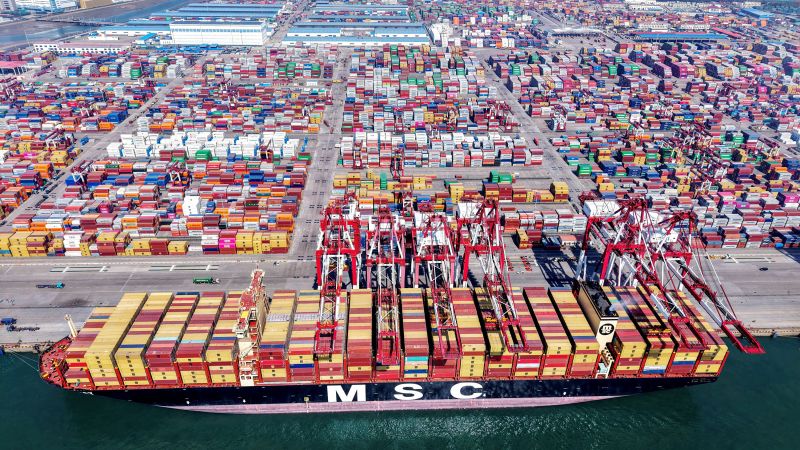China’s economic performance in the first quarter of 2025 has defied expectations, demonstrating resilience amid growing pressures from geopolitical tensions, particularly the escalating trade war with the United States. Official data from the National Bureau of Statistics (NBS) revealed that China’s gross domestic product (GDP) surged by 5.4% during this period. This growth rate notably surpassed the predictions of over 50 economists who had anticipated an expansion of only 5.1%, highlighting an unexpectedly strong start to the year for the world’s second-largest economy.
Sheng Laiyun, the deputy director of the NBS, provided insights into the economic landscape during a recent press conference. He articulated that although the national economy enjoyed a steady and promising beginning, the external environment is increasingly complex and fraught with challenges. Sheng cautioned that there is a noticeable insufficiency in the domestic effective demand growth, indicating underlying weaknesses that could manifest in the longer term. This dual narrative encapsulates both a moment of optimism buoyed by positive initial growth figures and a sense of caution regarding external and internal economic pressures.
The broader context of this growth must be framed within the ongoing trade conflict triggered by US tariffs, which have significantly affected China’s export landscape. In particular, economic analysts are closely monitoring the ramifications of the tariffs introduced by former President Donald Trump, which are set to further intensify following their implementation in April. The implications of these tariffs have been particularly concerning, given that they have resulted in an average tax rate exceeding 145% on Chinese imports, marking a historic escalation in trade tensions.
As global economic observers note, China’s challenges extend beyond just tariffs. The nation has been grappling with longstanding issues, including a persistent crisis within its property sector, deflation concerns, and a consumer base that remains hesitant to increase spending. A recent analysis by UBS economists, led by Tao Wang, predicted that the shockwaves from the tariff imposition pose unprecedented challenges to China’s exports. They suggested that significant adjustments within the domestic economy would be required to adapt to this new reality, downgrading their growth forecast for China in 2025 to 3.4%, down from an earlier projection of 4%. This adjustment is premised on the assumption that tariffs will persist and that Beijing will ultimately implement additional stimulus measures to bolster economic resilience.
Investment bank Goldman Sachs echoed similar sentiments, asserting that the ongoing tariffs would exert considerable pressure on China’s economic trajectory. They recently revised their GDP forecasts downward for 2025 and 2026 to 4% and 3.5%, respectively, from previous estimates of 4.5% and 4%. Such pessimism reflects a broader consensus among economists concerning the headwinds facing China, underscoring the precarious nature of its economic forecast amid external perturbations.
The data released by the NBS specifically reflects the first quarter’s growth performance, coinciding with two rounds of tariffs amounting to 20% imposed by Trump that were closely related to the trade of fentanyl. Notably, the NBS figures do not encompass the effects of further reciprocal tariffs that took effect in April. Therefore, the impact of the tariffs, which are already exerting significant pressure on various sectors, is likely to worsen as these additional measures take hold.
In summary, while the early economic indicators for China in the first quarter of 2025 may project a narrative of surprising growth, the supportive data is juxtaposed against a backdrop of escalating trade tensions and the specter of domestic structural challenges. As the geopolitical situation continues to evolve, economic analysts and policymakers are left to navigate a complex landscape that could have lasting consequences for China’s economic health going forward. This story remains in development and will be revisited as new information emerges.



